With the 2023 AIA Conference on Architecture set to kick off next week on June 7 at San Francisco’s Moscone Center, RECORD reached out to a handful of Bay Area–based architects, landscape architects, design writers, and critics (with a few RECORD Vanguards in the mix) seeking recommendations for those looking to branch off and explore the city beyond the convention center floor. From historic waterfront neighborhoods to overlooked architectural treasures to word-class parks providing classic Golden Gate views, below you’ll find our insider's suggestions for making the most of a trip to the City by the Bay.
Neighborhoods to Explore
The Dogpatch neighborhood is emblematic of the rapid rise of the eastern waterfront of San Francisco, blending historic shipbuilding structures, semi-repurposed factories, single-family houses dating back to the late 19thcentury, and some of the most ambitious mixed-use developments in the city into a vibrant mix of food, parks, museums, and creative design businesses. It’s well-connected to public transit, tends to have sunny weather (San Francisco microclimates!), and favors local retail over chains. It’s a historic district that seems to be pointing the way to the future. —Dan Spiegel, Founding Partner, SAW // Spiegel Aihara Workshop (San Francisco)
Architectural Landmarks Worth Seeking Out
Fort Winfield Scott at the Presidio is an easy-to- miss marvel: a military compound from the 1850s that sits below the Golden Gate Bridge beneath the span’s southern anchorage, built when this steep narrow strait was a national defense priority. Rugged and stark, gaunt and compelling, it’s like nothing else in the region—especially in this setting that compels you to savor the structural power of the bridge known worldwide for its elegant grace. —John King, urban design critic, The San Francisco Chronicle, and RECORD contributor
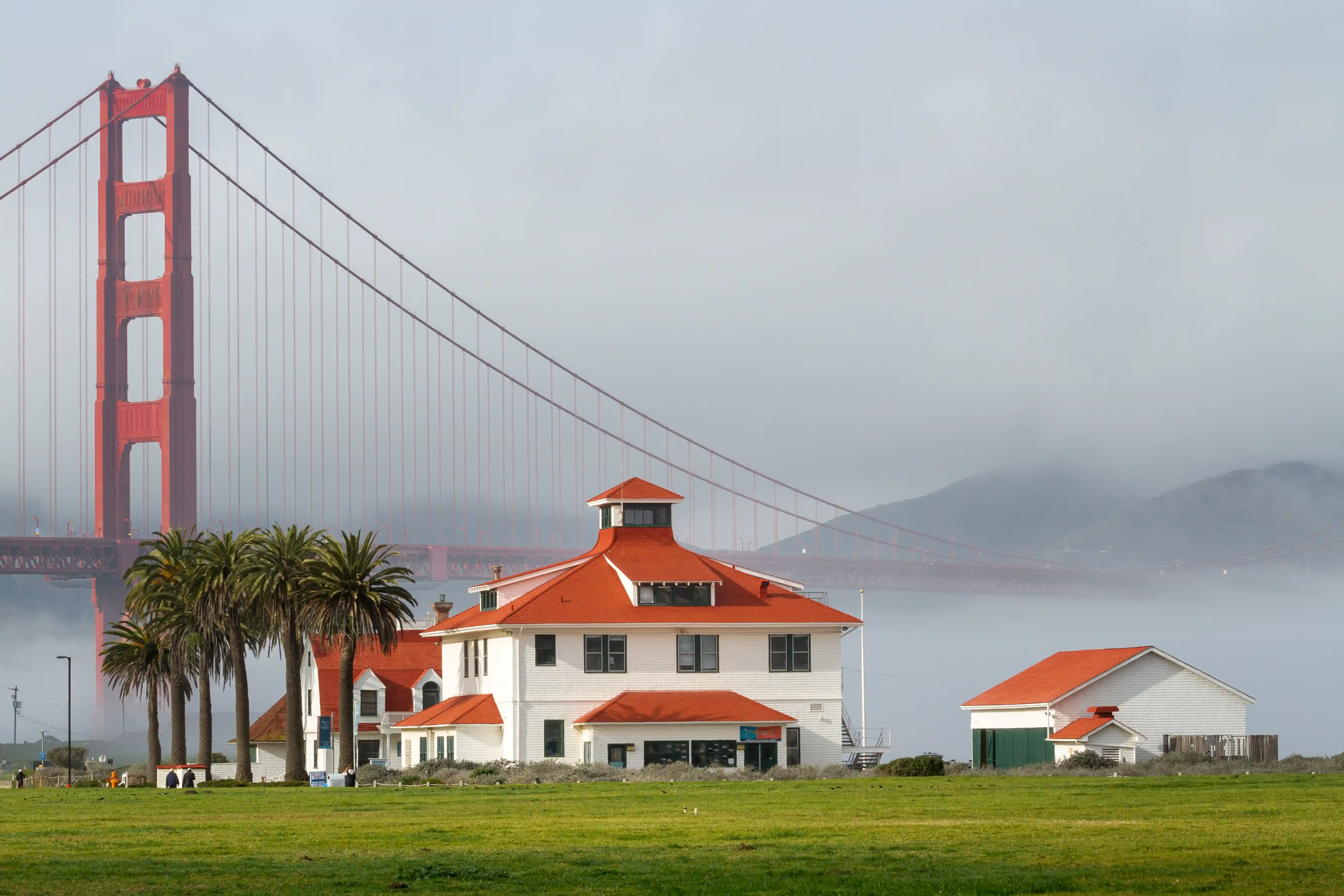
Fort Winfield Scott. Photo © Frank Schulenberg via Flickr
It’s a tie between St. Mary’s Cathedral by Luigi Nervi and Pietro Belluschi (1111 Gough St.) and the 1969 campus addition to the San Francisco Art Institute (800 Chestnut St.) by Paffard Keatinge-Clay. Both are great works of Brutalist architecture. St. Mary’s is worth seeing for its geometry and structure (and definitely tour the inside). The Art Institute’s site planning and overall configuration works perfectly and has great views of the city. —Lisa Iwamoto, Founding Partner, Iwamoto Scott (San Francisco)
I have always admired Kevin Roche’s first project, the Oakland Museum of California (1000 Oak St., Oakland). It is such a bold evocation of California living applied to a three-museum, four-city block institutional setting. It had numerous elements that didn’t work as well as hoped, and so we have been asked to renovate and expand it several times over the past 15 years. It remains a powerful statement of 1960s progressive modern architecture. —Mark Cavagnero, Founding Principal, Mark Cavagnero Associates (San Francisco)
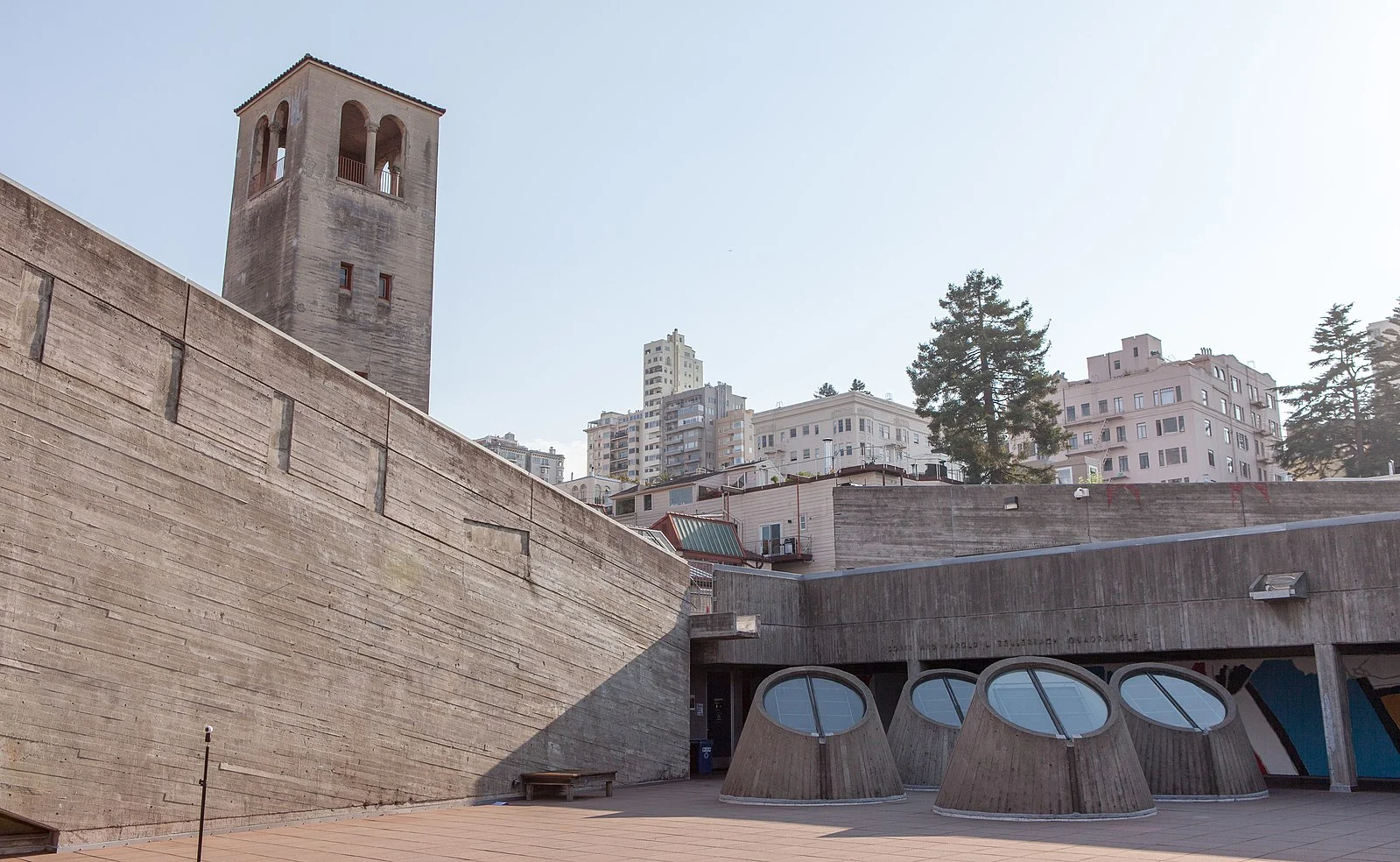
San Francisco Art Insitute. Photo © Pax Ahimsa Gethen via Wikimedia Commons
San Francisco City Hall (1 Dr. Carlton B. Goodlett Pl.) is one of the most luminous historic buildings in the country, inside and out, and is one of the very best examples of civic architecture in the service of democracy. The Ferry Building (1 Ferry Building) is an extraordinary adaptive reuse of the city’s original maritime gateway into a building that opens up with a great nave and is filled with artisanal foods, beverages, produce, and eateries—all regionally focused. This project became feasible after the removal of the despised elevated Embarcadero Freeway—one of the worst pieces of infrastructure in America—that separated the Ferry Building and the bay from the city. —Craig Hartman, Senior Consulting Design Partner, SOM (San Francisco)
Hidden Gems
No architecture tour of San Francisco is complete without a stop to see John Portman’s Neo-Futurist lobby at the Hyatt Regency Embarcadero (5 Embarcadero Center). The soaring atrium with stacked balconies and glass elevators remains one of the most dramatic interior spaces in the city. —Kristen Sidell and Rudabeh Pakravan, Founding Principals, Sidell Pakravan (Berkeley)
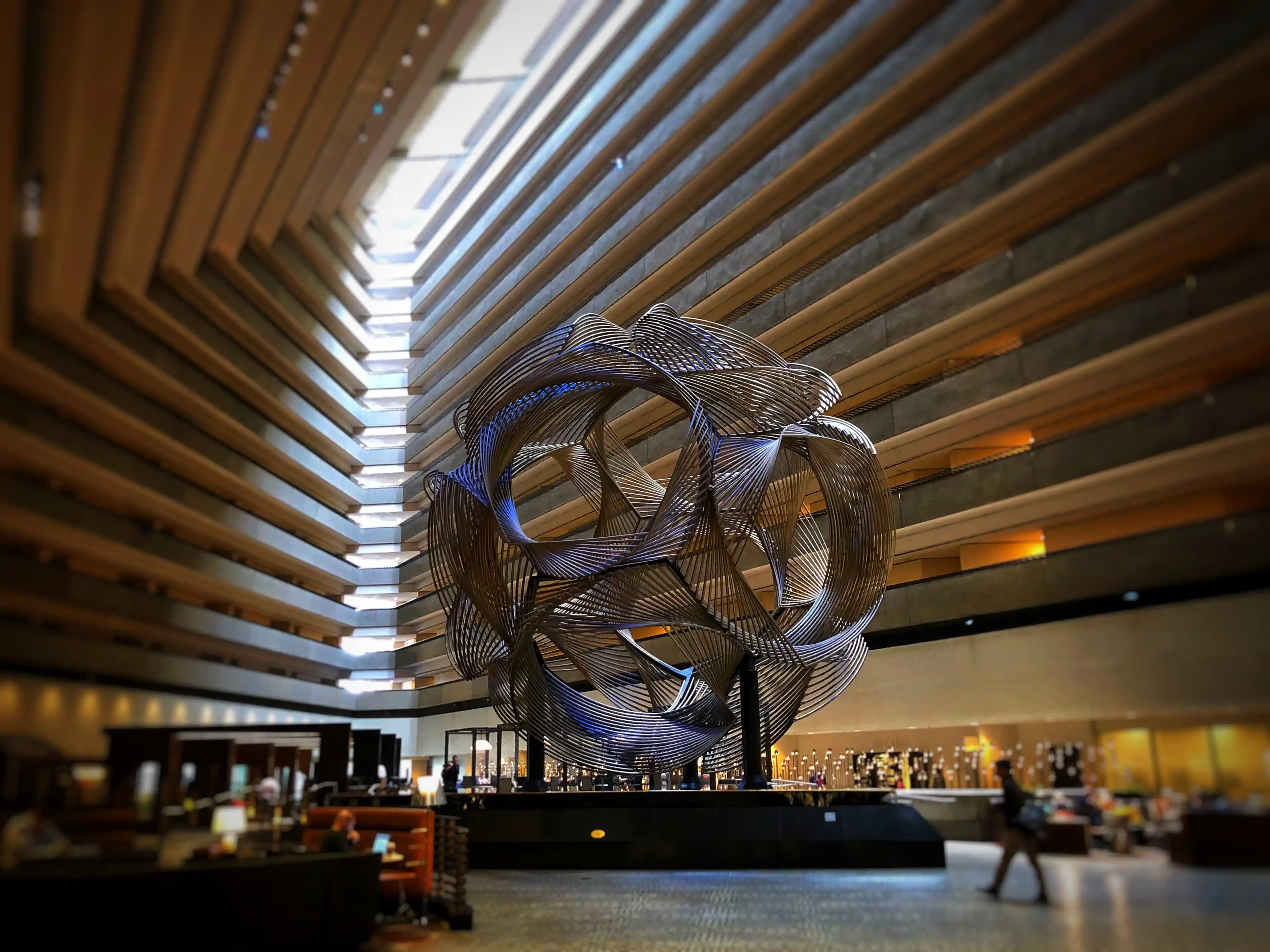
John Portman's Hyatt Regency Embarcadero. Photo by Shelby Bell via Wikimedia Commons
Mount Davidson Park (Myra Way and Dalewood Way) is the highest point in San Francisco but is tucked away in the quiet Miraloma neighborhood in a southern part of the city with relatively few visitors. A roundabout walk through an enchanted eucalyptus forest or a short but steep scramble up a narrow path gives way to sweeping views over the city's animating topography as it drops to the bay. —Dan Spiegel
Arguably San Francisco’s most beautiful hike and urban antidote is the Coastal Trail at Lands End (680 Point Lobos Ave.). It combines dramatic landscape, killer views, and local history. Start at the Lands End Lookout visitors center overlooking the Sutro Bath Ruins and head towards the USS San Francisco Memorial, Mile Rock Beach, the Labyrinth, and the Legion of Honor. —Richard Stacy, Principal, Leddy Maytum Stacy Architects (San Francisco)
The Great Outdoors: Detour-Worthy Parks and Green Spaces
Fort Funston (Fort Funston Rd.) is a decommissioned harbor defense post on a steep cliffside along the southernmost ocean edge of San Francisco. While it can be windy and chilly, the park offers panoramic views of the breathtaking coastline with winding trails through sandy beach bluffs and graffiti-covered military ruins. On sunny days in particular, the crisp ocean breeze and uplifting vistas truly invigorate the soul. —Megumi Aihara, Founding Partner, SAW // Spiegel Aihara Workshop
Golden Gate Park is the best and offers many different options for experiencing nature and architecture in the city. JFK Drive is closed to cars and links the Conservancy of Flowers with the de Young Museum, the Cal Academy of Sciences, and a new Skystar Wheel. —Bill Leddy, Principal, Leddy Maytum Stacy Architects (San Francisco)
If you want to immerse yourself in San Francisco’s defining physical attraction, the overlap of natural beauty and urban forms, this is the spot. Set near the peak of Russian Hill, it’s an 0.8-acre nook where Taylor and Vallejo streets should meet, just downhill from a block that juxtaposes Willis Polk–designed homes with a 32-story tower (999 Green St.) developed by Joseph Eichler (wildly inappropriate in its setting but as an artifact, oddly compelling). The landscape is nothing much, trees and grass and a few benches along a concrete path. But the setting, the views, the serenity amid spectacle—this is a take on the city you’ll remember when all those afternoon panels are forgotten. —John King
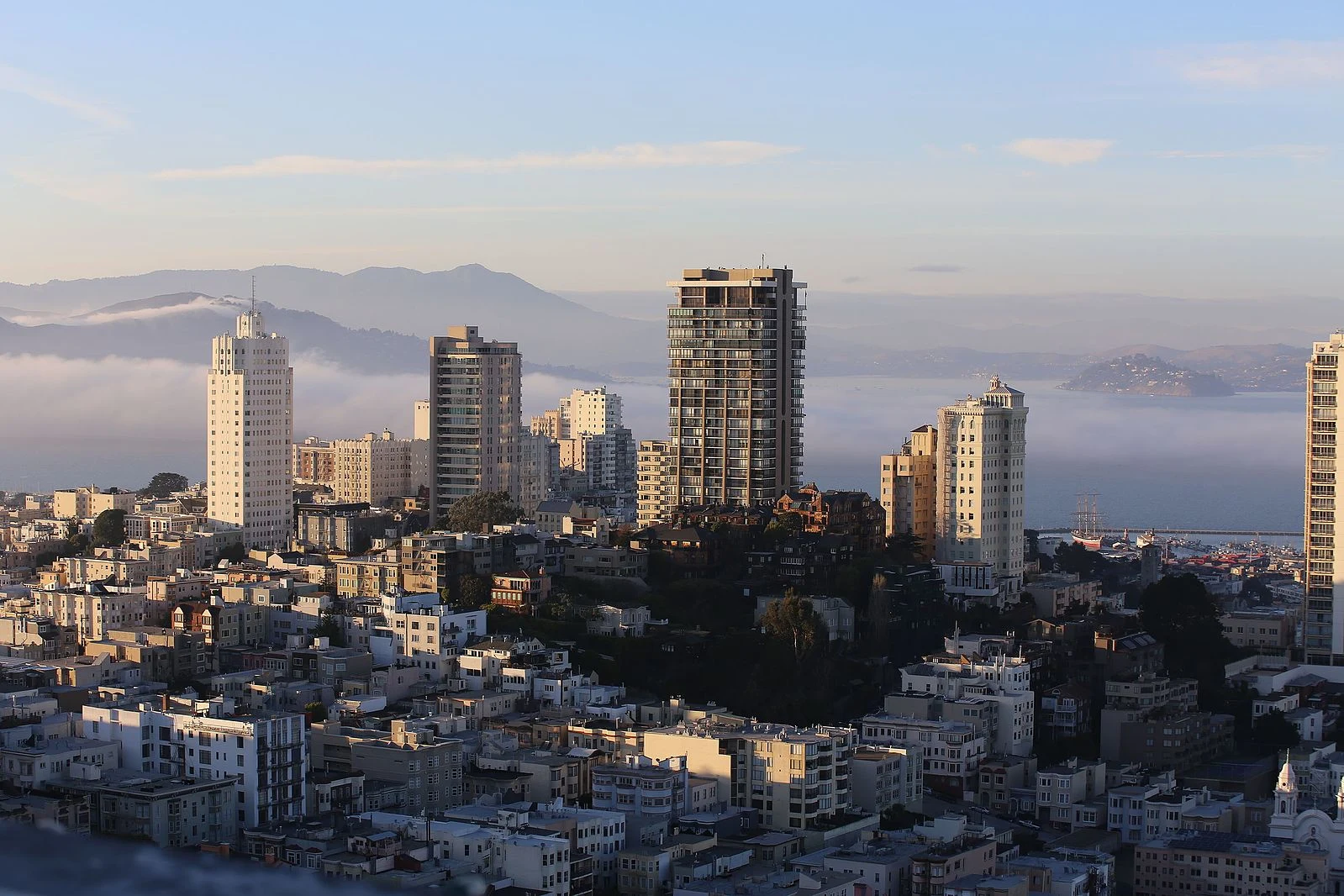
View from the south east of the Eichler Summit building and its neighboring towers.. Photo © Basil D. Soufi via Wikimedia Commons
The Presidio Tunnel Tops over the Doyle Drive approach to the Golden Gate Bridge is a brand-new example of what 21st-century parks can and should look and feel like. It connects the Presidio’s historic central green with Crissy Field and the bay. From its upper level, the view includes the San Francisco skyline, the historic Presidio, the Golden Gate Bridge, the bay, and the Marin Headlands. It was conceived by Michael Painter, a local landscape architect after the Loma Prieta earthquake damaged the elevated Doyle Drive. With his drawings and a decade of tenaciousness, he single-handedly convinced federal, state, and local authorities to move Doyle Drive to the ground, place it within tunnels, and create a park on top. The resulting place is a magnificent union of humanity, nature, and city. —Craig Hartman
Spots to Spend the Perfect Day (Or Night Out)
SF Jazz (201 Franklin St.) offers some of the best music in town in an intimate setting. Beforehand you can explore Hayes Valley’s trendy shops, restaurants, and public space reborn from the Loma Prita Earthquake freeway demolition. On weekends, Hayes Street is closed to traffic under SF’s Shared Spaces program. —Bill Leddy
If you need to get away from the hustle and bustle, stop by Good Hot, a group of cedar-clad, James Turell inspired saunas in Point San Pablo designed by local architects. The minimalist structures are situated on a bluff near the bay, so you can go for a cold plunge when it gets too hot inside. (1950 Stenmark Drive, Richmond). —Kristen Sidell and Rudabeh Pakravan
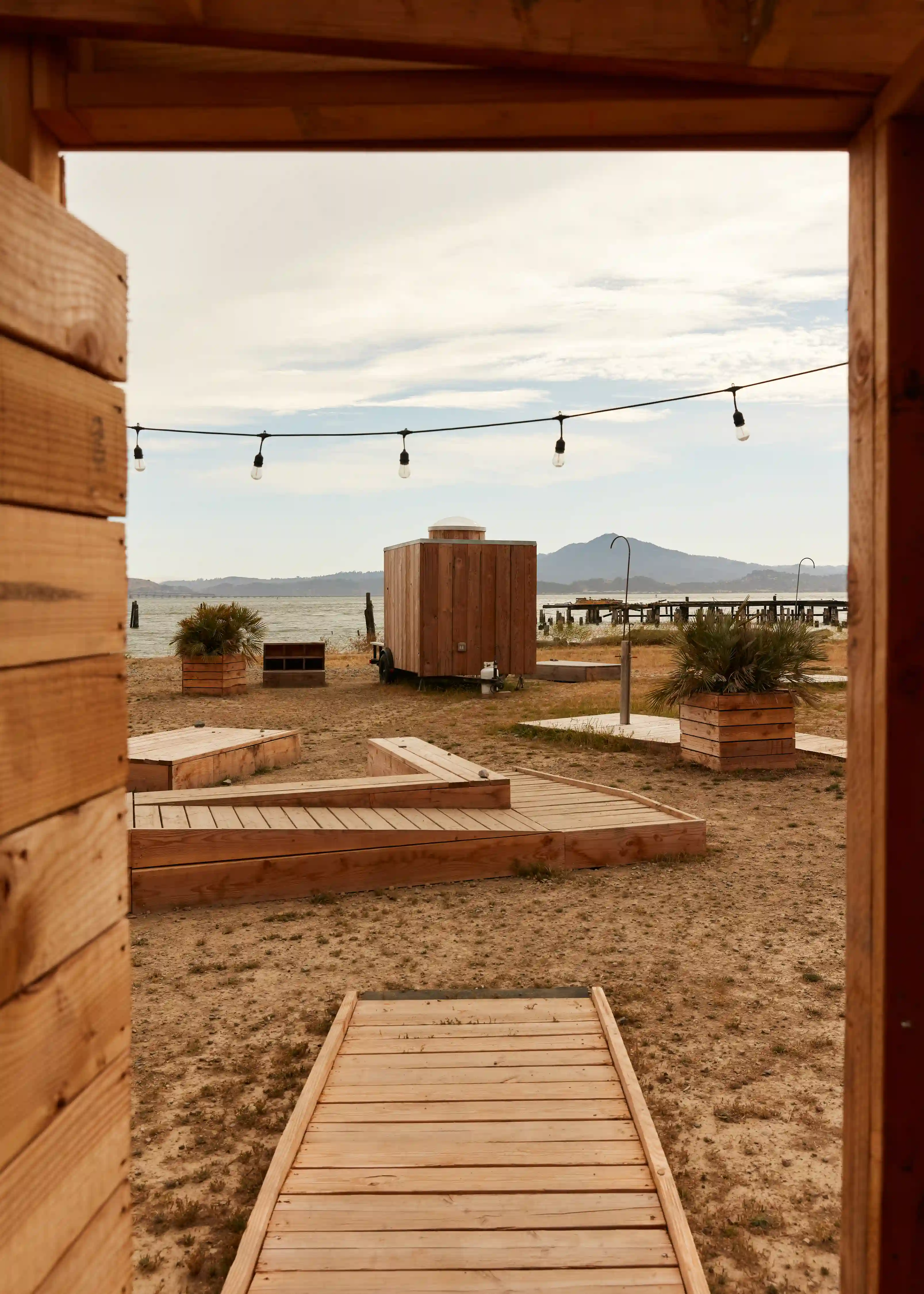
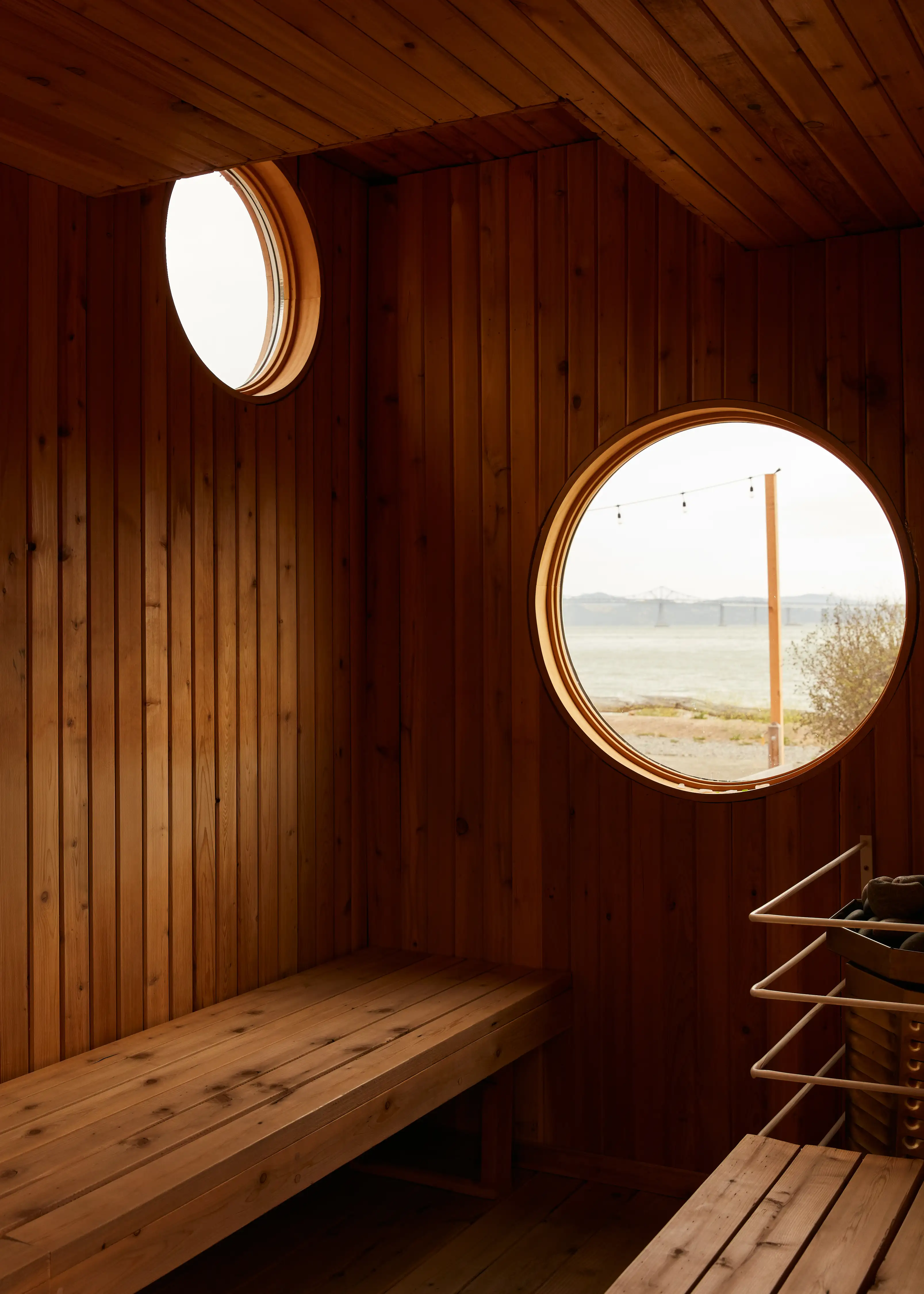
Good Hot saunas. Photos by Aysia Stieb
Obligatory Tourist Traps
Fisherman’s Wharf is great! Okay, most of it is schlock, but it’s worth scooting around the keychain hawkers to get an earful of the sea lions at Pier 39, to play Musée Mécanique’s antiquated arcades at Pier 45, and to watch wetsuit-free swimmers battle the Arctic-cooled bay from the Hyde Street Pier. Take in the view of another great tourist trap—Alcatraz Island—while you’re there. —Clare Jacobson, architecture and design writer and RECORD contributor
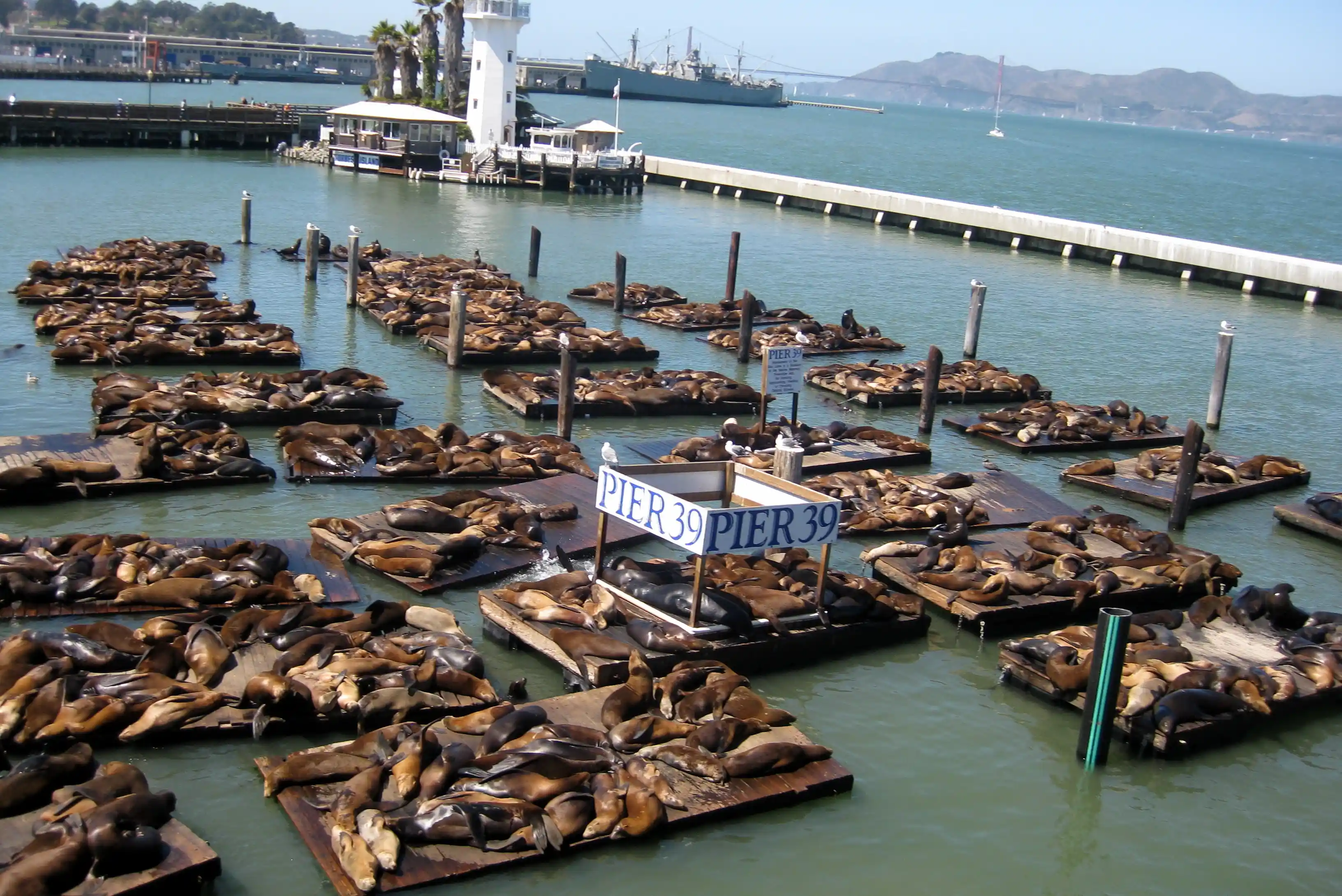
Fisherman's Wharf. Photo © Wally Gobetz via Flickr
Northern California Road Trip: Top Spots Further Afield
This road trip is equally amazing for the journey and the destination: Sea Ranch in Sonoma County. You’ll head north of San Francisco, cross the Golden Gate Bridge, and drive 100 miles up the dramatic coast. The road winds along sheer cliffs with dramatic views of the Pacific, unspoiled beaches, rolling golden hills, and Redwood forests. Although the natural scenery never ceases to impress, the buildings and land stewardship of Sea Ranch will satisfy every architect’s interest in formal innovation, vernacular material interpretation, and inspired design. —Kristen Sidell and Rudabeh Pakravan,
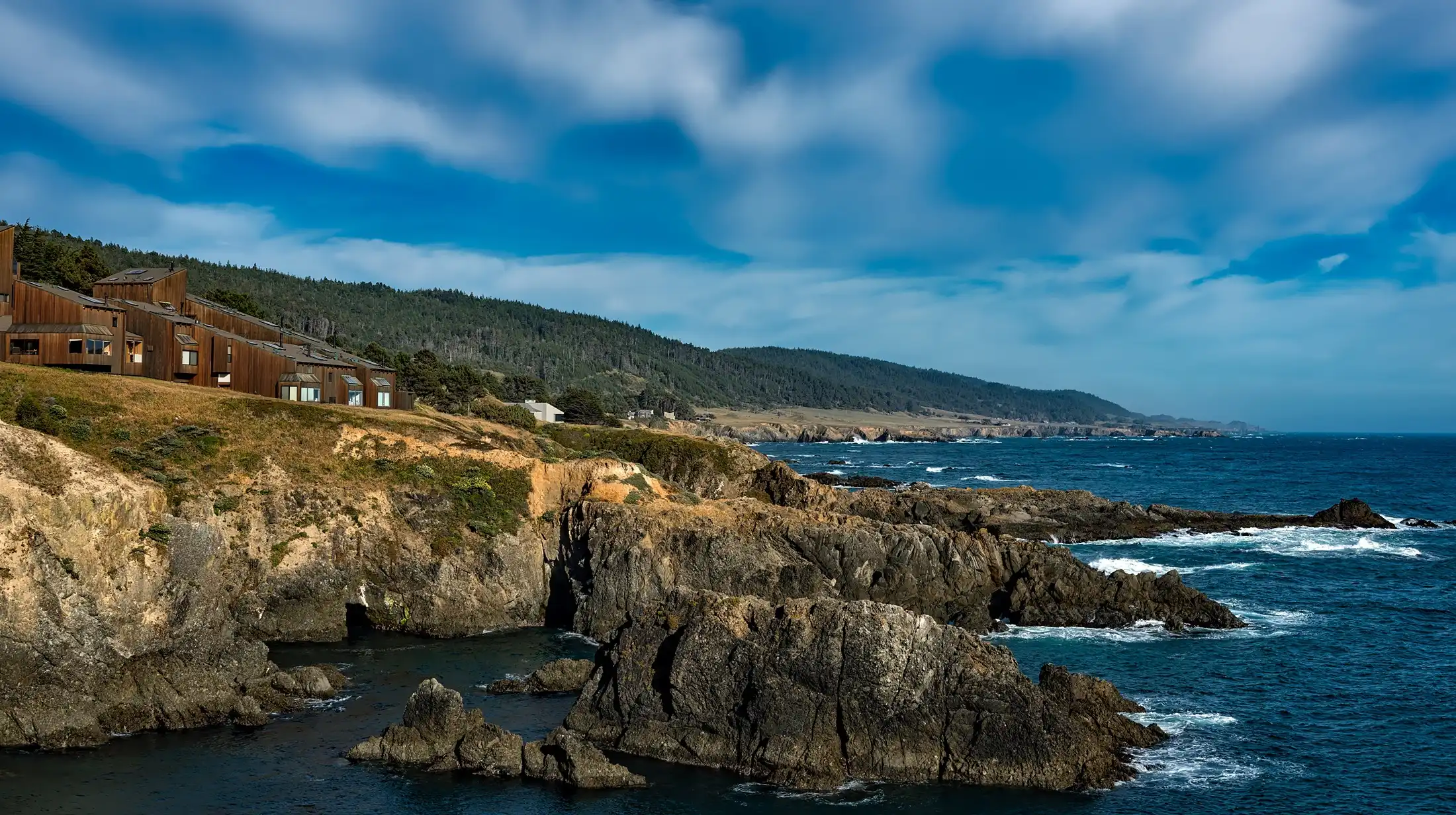
The coastal terrain of Sea Ranch. Photo © Pixabay
Escape the San Francisco fog with a bike or ferry ride (or a car, if you must) to see mid-century design in Sausalito. Head to Heath Ceramics (400 Gate 5 Rd.), whose classic dinnerware is still fired in a 1959 studio/showroom designed by Marquis and Stoller. Visit the Bay Model Visitor Center (2100 Bridgeway), where a 1957 hydraulic research model of the San Francisco Bay and Sacramento/San Joaquin Delta covers more than two acres. Then walk the docks of Sausalito’s houseboats, roughly 400 unique architectural visions, many of which were built by artists in the 1960s. —Clare Jacobson
The great redwoods of Muir Woods National Monument (1 Muir Woods Rd, Mill Valley) and Muir Beach are both a short hop north of the Golden Gate Bridge. Also in that neighborhood is the Tennessee Valley Trail (591 Tennessee Valley Rd, Mill Valley), a beautiful two-mile hike through the valley out to the Pacific—one of the most pleasant, beautiful hikes on Earth. One hour north of the bridge is Healdsburg in Sonoma County. It’s a wonderful town square framed by local shops, restaurants, and bars that’s recently attracted interesting new architecture infilled within its historic context. —Craig Hartman
Editors’ Picks
California Academy of Sciences, Renzo Piano Building Workshop (55 Music Concourse Dr.)
Cathedral of Christ the Light, SOM (2121 Harrison St., Oakland)
Hallidie Building, Willis Polk (130 Sutter St.)
Marin County Civic Center, Frank Lloyd Wright (10 Ave. of the Flags, San Rafael)
McElroy Octagon House (2645 Gough St.)
Salesforce Park, PWP Landscape Architecture (425 Mission St.)
Transamerica Pyramid, William Pereira (600 Montgomery Ave.)
William Stout Architectural Books (804 Montgomery St.)
—Compiled by Ilana Herzig, Matt Hickman, and Pansy Schulman

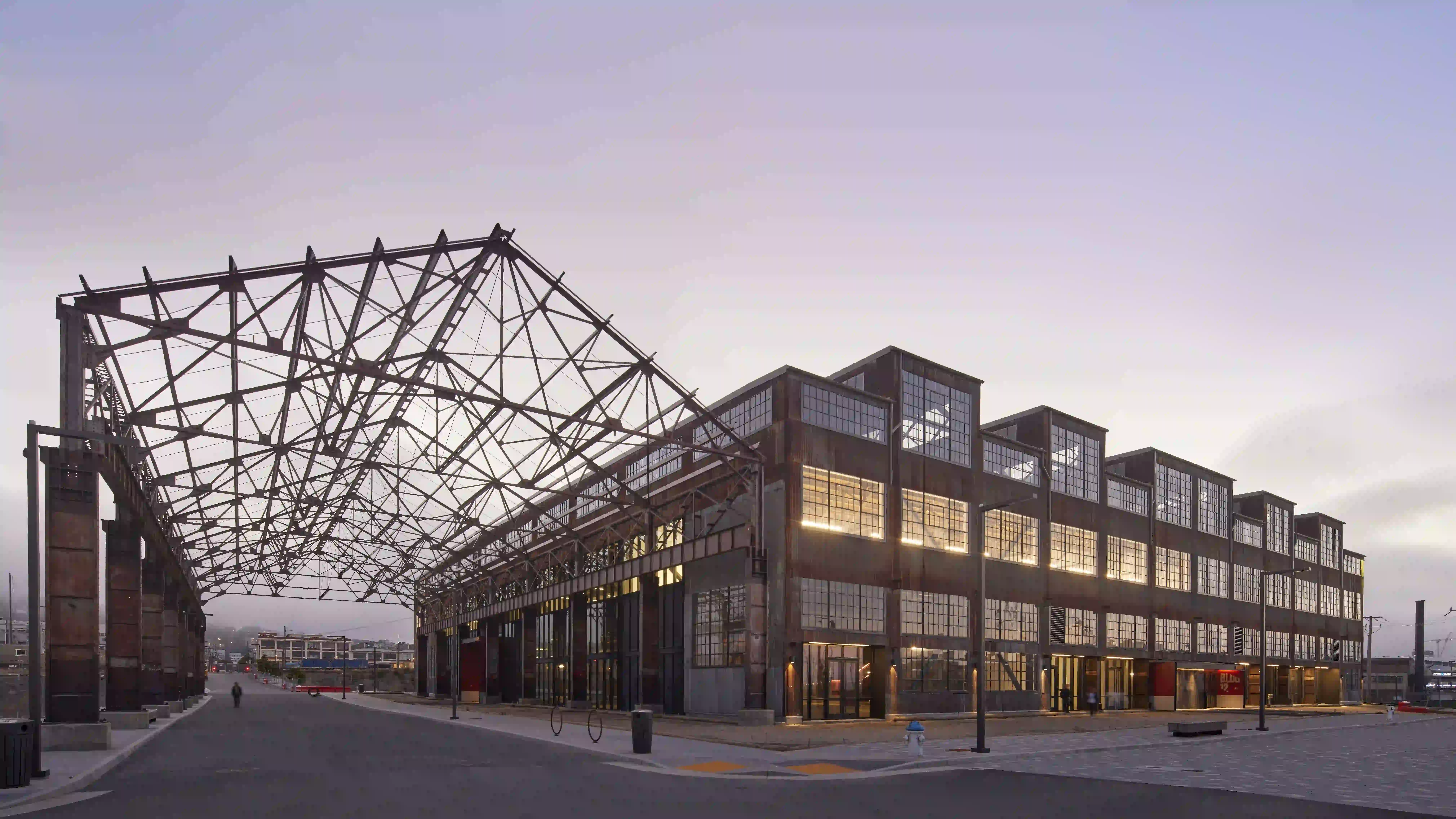
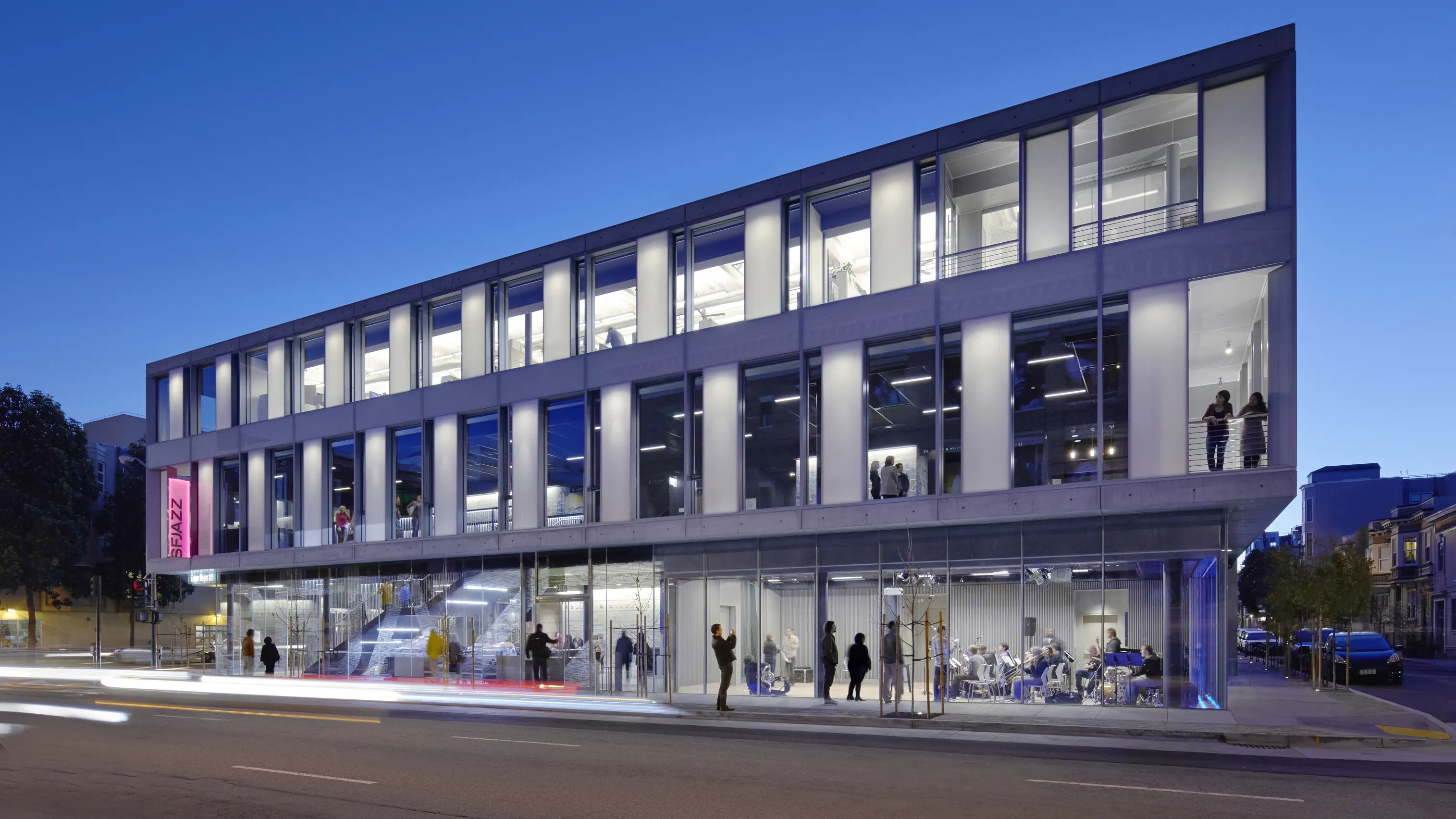
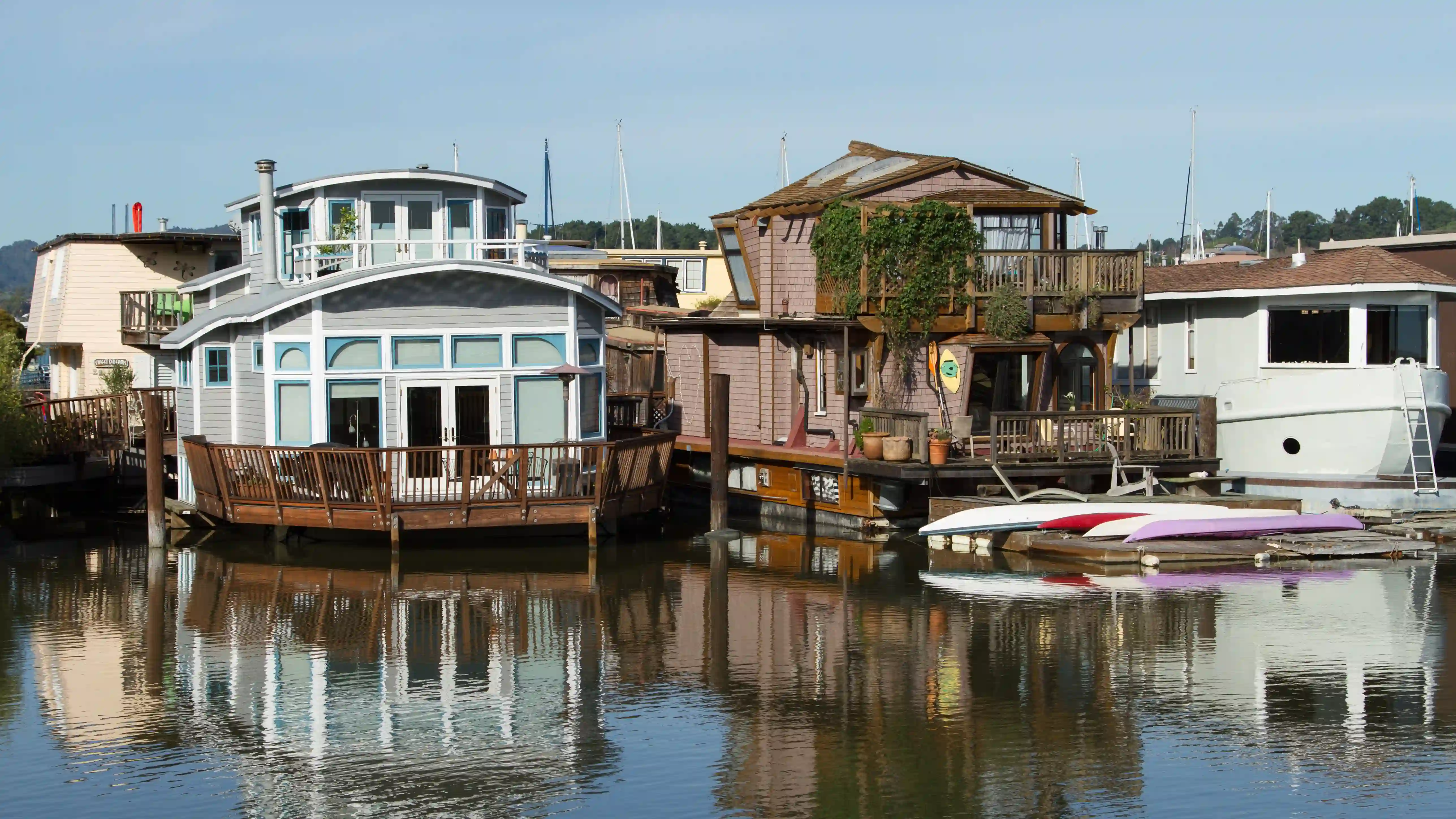


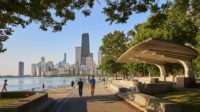
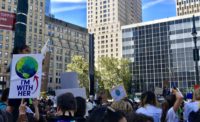
Post a comment to this article
Report Abusive Comment